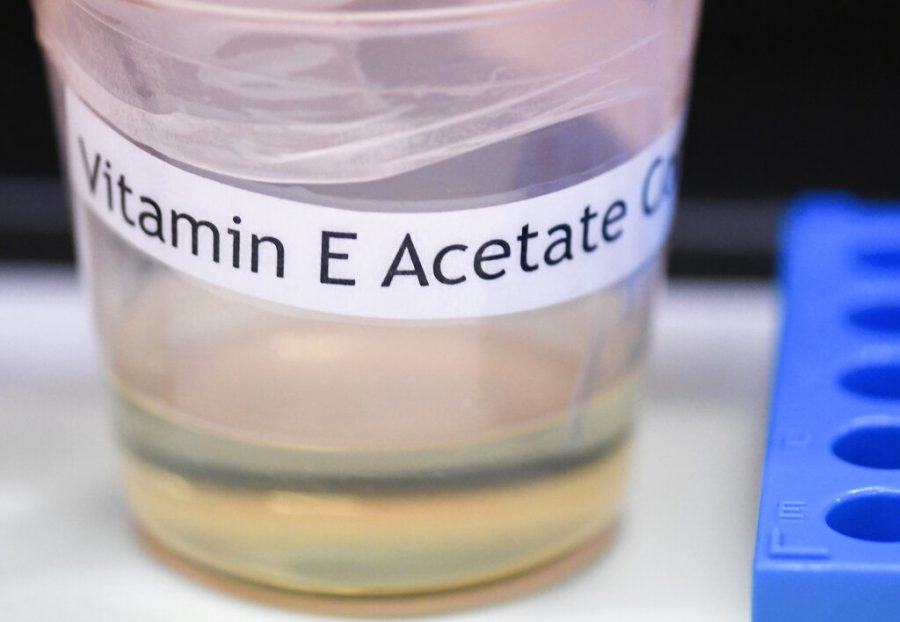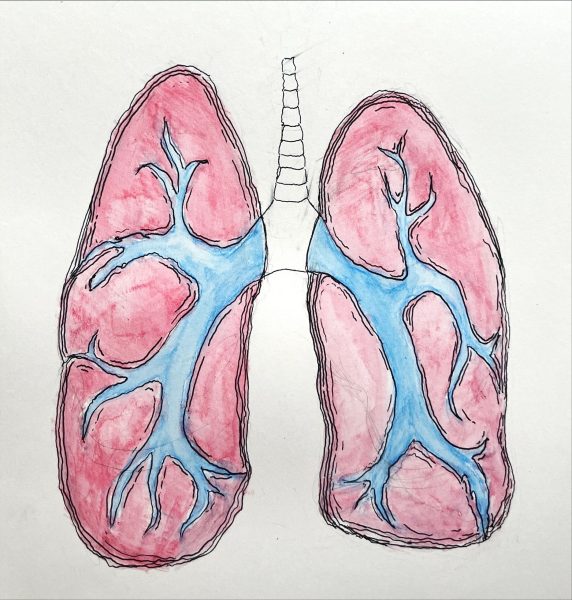Vaping companies need to inform consumers of chemicals in their products
November 13, 2019
The Centers for Disease Control and Prevention reported new research relating to illnesses linked with vaping products on Nov. 8. New information shows that the substance vitamin E acetate was found in lung fluids of all 29 patients who were tested, and suggests that it could be the cause for the illnesses and deaths of vape consumers. Companies that produce these products should include every ingredient used in the creation of a vaporizer in order to protect consumers from lung disease and possible death.
{{tncms-inline content=”<ul> <li>Alpha-tocopheryl acetate</li> <li>Beta-tocopheryl acetate</li> <li>Gamma-tocopheryl acetate</li> <li>Delta-tocopheryl acetate</li> <li>Alpha-tocotrienol acetate</li> <li>Beta-tocotrienol acetate</li> <li>Gamma-tocotrienol acetate</li> <li>Delta-tocotrienol acetate</li> </ul>” id=”348f51e6-2acd-4cef-9a1d-3b1e916ea60e” style-type=”bio” title=”Other Forms of Vitamin E” type=”relcontent”}}
In a Sept. 16 Northern Star article, it was reported there were 380 cases of lung illness and six deaths linked to vaping products, according to the CDC. As of Nov. 8, the CDC reported that these numbers have risen to 2,051 cases of lung illness and 39 deaths. Consumers need to be completely aware of what substances they are inhaling into their lungs to be able to avoid health dangers.
The substance at the center of the new revelations about the health scare, vitamin E acetate, has a history of potential danger to humans. In 2004, researchers from the American Heart Association reported that digesting vitamin E in doses of 400 international units (IU) can increase risk of death.
Vitamin E acetate is mainly used in skin care products and dietary supplements because of its antioxidant properties, according to Healthline. When digested in the intestines, alpha-tocopheryl acetate is converted to just alpha-tocopheryl. While medical researchers in the past might have been mainly concerned with how the digestion of certain chemical compounds may cause health risks, they should now shift their focus to study the affects of inhaling these substances.
The U.S. Food and Drug Administration regulates all tobacco products including vape, according to the administration’s website. They require manufactures to list the ingredients used to make the liquids used in vaping products on their packaging to make consumers aware.
The main ingredients used in vaping liquids are water, propylene glycol or vegetable glycerin, nicotine and flavorings, according to Breathe Pennsylvania.
The exact substances used in “flavorings” remain ambiguous due to companies not wanting their flavors to be copied by competitors. Even though the Food and Drug Administration requires the natural oils to be labeled on the packaging, the flavorings might be hiding mystery substances such as diacetyl, which has been proven to cause the disease “popcorn lung,” or the suspected culprit of the current growing lung disease epidemic: vitamin E acetate.
Vaping product companies should not be able to keep any of the ingredients used in their products a secret. Many of the health effects of chemicals are known for topical skin use or oral digestion, but still pose unknown risks to those who choose to inhale them. Without knowing exactly what they are putting into their lungs, consumers who chose to vape may be at risk for lung disease and possible death.













